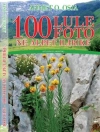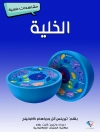This text details the plant-assisted remediation method, “phytoremediation, ‘ which involves the interaction of plant roots and associated rhizospheric microorganisms for the remediation of soil contaminated with high levels of metals, pesticides, solvents, radionuclides, explosives, crude oil, organic compounds and various other contaminants. Each chapter highlights and compares the beneficial and economical alternatives of phytoremediation to currently practiced soil removal and burial practices.
Table des matières
Section 1. Phytoremediation of Organic Contaminants.- Phytoremediation of PCBs and PAHs by Grasses: A Critical Perspective.- Organic Soil Amendments in the Phytoremediation Process.- Phytoremediation of Crude Oil Contaminated Soil using Cynodon dactylon (L.) Pers).- A Study on Degradation of Heavy Metals in Crude Oil Contaminated Soil using Cyperus rotundus.- Polycyclic Aromatic Hydrocarbons and Heavy Metal Contaminated Sites: Phytoremediation as a Strategy for Addressing the Complexity of Pollution.- Phytoremediation of Polycyclic Aromatic Hydrocarbons (PAHs) in Urban Atmospheric Deposition Using Bio-retention Systems.- Section 2. Wastewater Engineering and Technology.- Plant Growth Promoting Bacteria: A Good Source for Phytoremediation of Metals Contaminated Soil.- Biotechnological Approaches to Remediate Soil and Water using Plant-Microbe Interactions.- Current and Future Opportunities for Forest Land Application Systems of Wastewater.- Bio-retention Systems for Storm water Treatment and Management in Urban Systems.- Fungal Laccase Enzyme Applications in Bioremediation of Polluted Wastewater.- Section 3. Natural and Constructed Wetlands for Phytoremediation.- Phytoremediation Applications for Waste Water and Improved Water Quality.- Plants for Constructed Wetlands as an Ecological Engineering Alternative to Road Runoff Desalination.- Constructed Wetlands for Livestock Wastewater Treatment: Antibiotics Removal and Effects on CWs Performance.- Phytoremediation Potential of Selected Mangrove Plants for Trace Metal Contamination in Indian Sundarban Wetland.- Fate of Phenolic Compounds in Constructed Wetlands Treating Contaminated Water.- Removal of Pathogenic Bacteria in Constructed Wetlands: Mechanisms and Efficiency.- Section 4. Phytoremediation for Reclamation and Restoration.- Low-Tech Alternatives for the Rehabilitation of Aquatic and Riparian Environments.- Proposed Rehabilitation Method of Uncontrolled Landfills in Insular Communities Through Multi Criteria Analysis Decision Tool.- Suitability of Different Mediterranean Plants for Phytoremediation of Mine Soils Affected with Cadmium.
A propos de l’auteur
Dr. Abid A Ansari, M.Sc., Ph.DDepartment of Biology, University of Tabuk
Tabuk, Kingdom of Saudi Arabia
Dr. Sarvajeet Singh Gill, M.Sc. (Gold medal), M.Phil., Ph.D
Dr. Ritu Gill, Ph.D
Stress Physiology and Molecular Biology Lab,
Centre for Biotechnology,
MD University,
Rohtak 124 001, Haryana,
India
Dr. Guy R. Lanza, Ph.D.
College of Environmental Science and Forestry
State University of New York (SUNY)
Syracuse, NY 13210-2778
USA
Dr. Lee Newman, Ph.D
College of Environmental Science and Forestry
State University of New York (SUNY)
Syracuse, NY 13210-2778
USA












